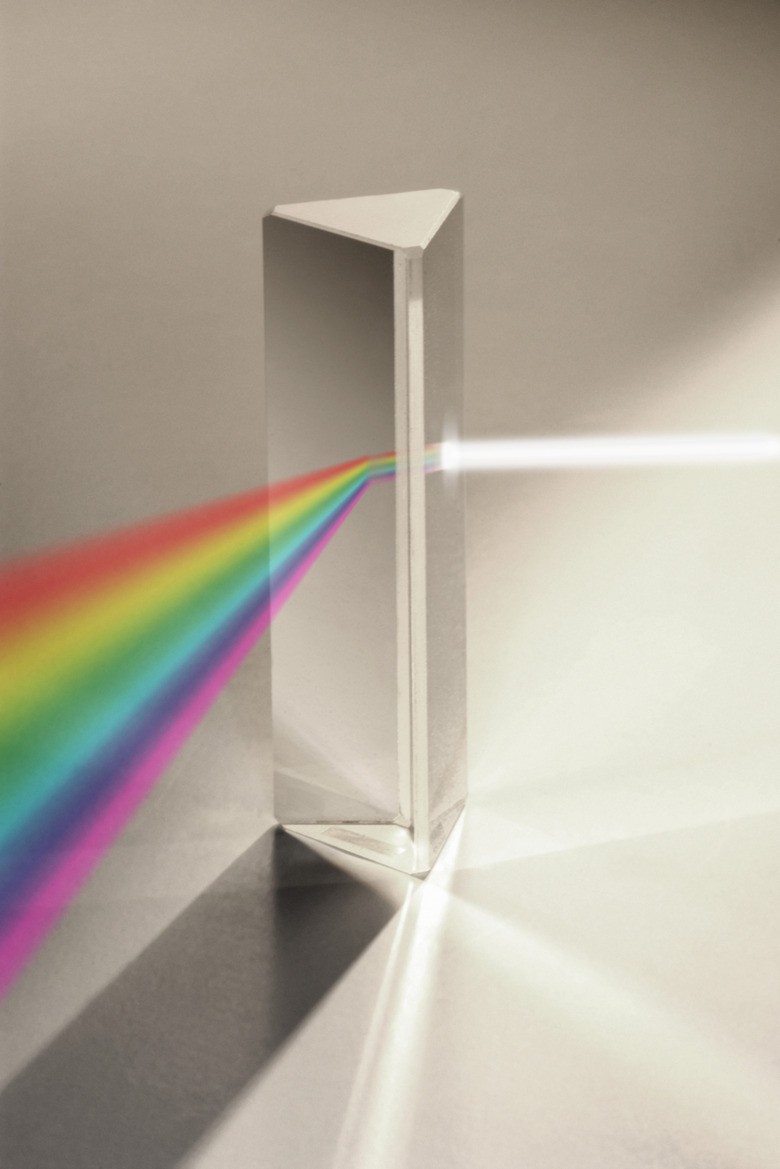Light-Dispersion Experiments For Kids
Light dispersion refers to the practice of separating a beam of white light into the individual colors that make up a beam of light. Use a prism to demonstrate this. Isaac Newton was the first to discover that each beam of light is composed of a full spectrum of colors. Although people had been aware of prisms before, they had always believed that prisms gave color to the light. Newton's experiments proved that the prisms only dispersed the light into different color bands.
Learn About Rainbows
Learn About Rainbows
Ask students if they think that a rainbow's colors always appear in the same order. Have them draw what they think a rainbow looks like. Show students how to create a rainbow using a prism. Compare the rainbow created by the prism to the rainbow that students colored. Ask students to note the differences between the two rainbows. Explain that all light beams contain the full spectrum of colors, but that this spectrum can only be seen when the light beam travels through a prism. Explain that each rainbow always contains the colors red, orange, yellow, green, blue, indigo and violet and that these colors always appear in that order.
Make a Prism
Make a Prism
Students can create their own prism with clear gelatin. Prepare the gelatin using half the amount of water recommended on the package and pour the gelatin into a square or rectangular mold such as a reusable plastic container or a a small baking pan. After the gelatin has hardened, remove it from the mold and cut into different prism shapes such as a semicircle, a wide middle with thin ends, or a thin middle with wide ends. Shine a flashlight through the gelatin to see how the light is dispersed and bent. Have students note how the light behaves differently when it passes through different prisms. Place a plastic comb between the flashlight and the gelatin prism and note how the lines from the comb make it easier to see the way the light is bent by the prism.
In the Dark
In the Dark
Students gain a better understanding of light behavior by observing the formation of a rainbow in a dark room. For this experiment use black construction paper to cover the flashlight beam, but first cut a small slit at the center of this piece of paper. Fill a small, clear, plastic tub with water and lean a mirror in the water at one end of the tub. Shine the light on the mirror. Hold up a blank white card to catch the reflected beam of light.
Reverse Prism
Reverse Prism
Just as a prism disperses a white beam of light, the colors of the rainbow when shone through a prism will come out at the other end as a white beam of light. To gain a better understanding, take three flashlights and cover them with different translucent colors, one red, one blue and one green. Explain that these constitute the primary colors of light. Ask students to predict what will happen when they combine the different beams of light. Turn down the lights and check the results by shining the beams against a white piece of paper.
References
Cite This Article
MLA
Ross, Lissabeth. "Light-Dispersion Experiments For Kids" sciencing.com, https://www.sciencing.com/lightdispersion-experiments-kids-12011389/. 24 April 2017.
APA
Ross, Lissabeth. (2017, April 24). Light-Dispersion Experiments For Kids. sciencing.com. Retrieved from https://www.sciencing.com/lightdispersion-experiments-kids-12011389/
Chicago
Ross, Lissabeth. Light-Dispersion Experiments For Kids last modified March 24, 2022. https://www.sciencing.com/lightdispersion-experiments-kids-12011389/
